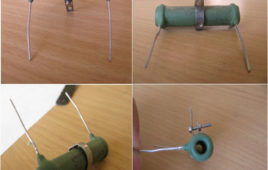Wire wound adjustable resistors or rheostats are high power rheostats that can provide variable resistances to the circuit over a certain range. Hence, these are widely used in those areas where circuits are often required to work at high temperatures. It differs from the potentiometer in terms of power handling capacity and construction. The outer appearance of a wire wound rheostat gives an impression of a hollow cylinder having two thin lead connections at the sides of its terminal and a horse shoe shaped metal slider that has a nut bolt assembly at its open end. The ceramic and the wire wound assembly over it are covered by silicone. This coating ensures that the rheostat is tolerant to temperature variations, moisture, and oil and is very well electrically insulated. A lead wire wounded on the ceramic rod serves as the variable resistor.

